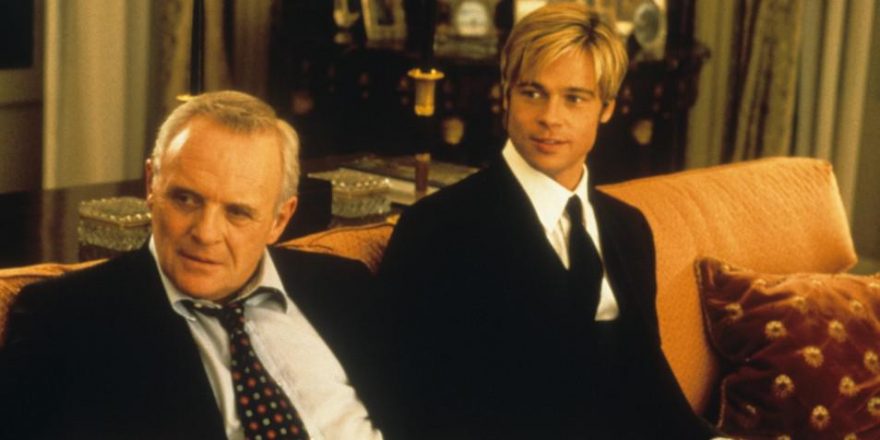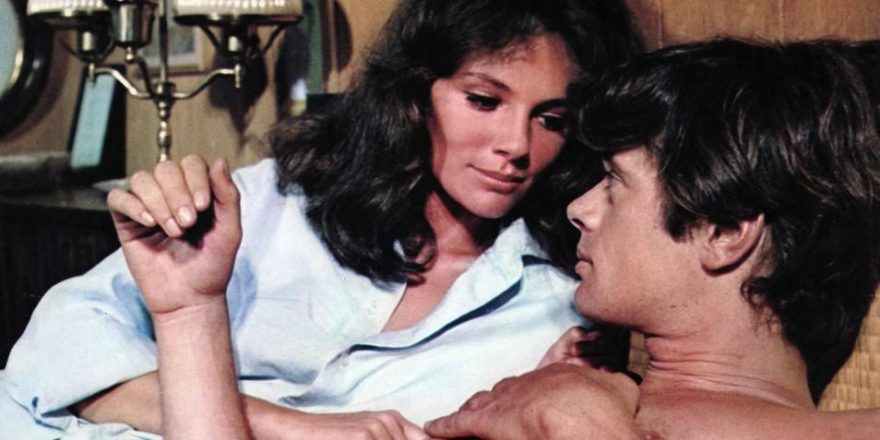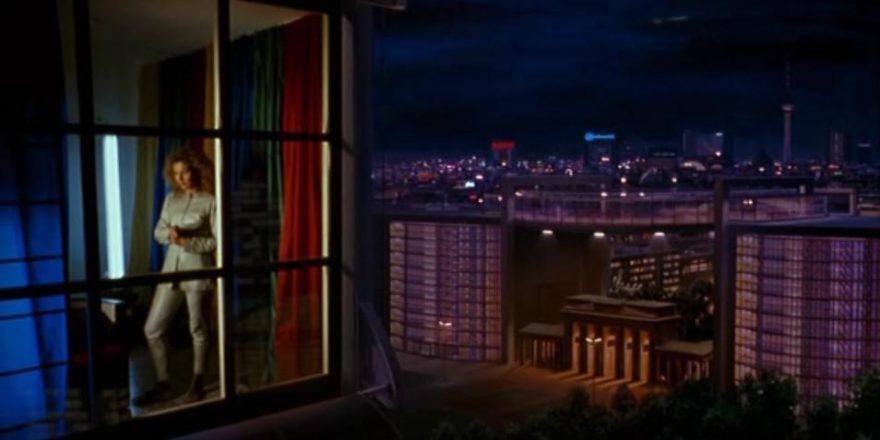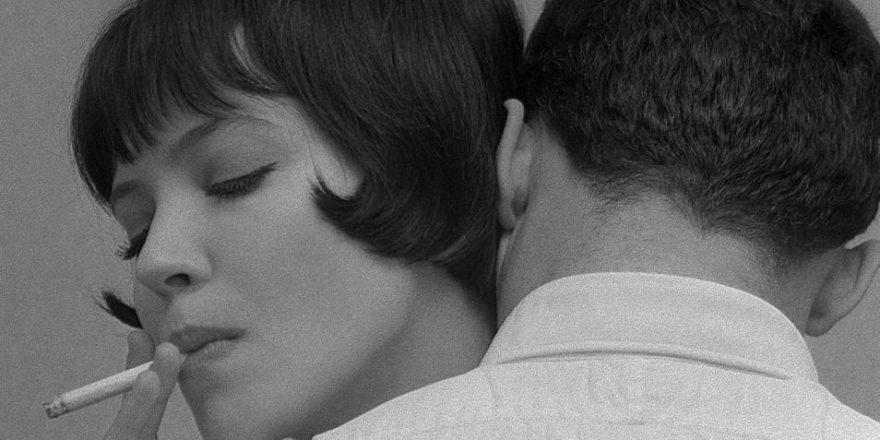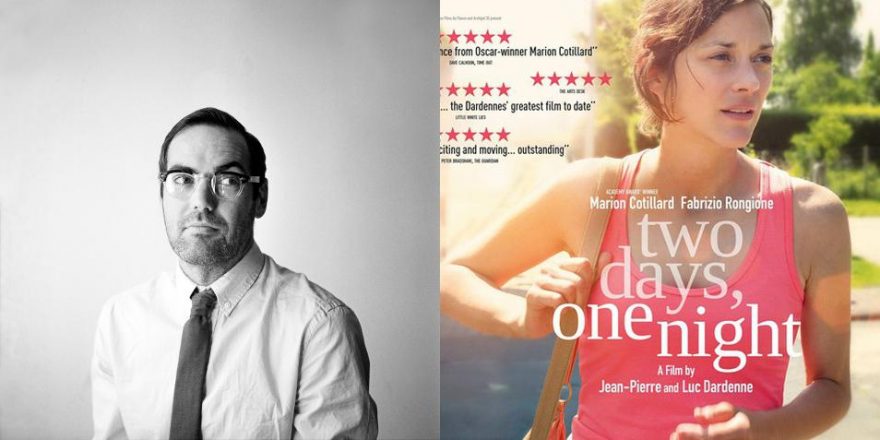In order to talk about my personal relationship to Meet Joe Black, we have to start with my personal relationship to Jim Carrey. Let’s take it back to 1994. I’m 12 years old, living on the Mediterranean island of Cyprus, navigating the beginnings of adolescence, trying to figure out who I am and what I’m all about. My dad brings home a copy of The Mask from the video store one day – a pirated bootleg, of course, because that’s all that’s available in Cyprus, even in the video stores – and I pop it in without much expectation. The Mask proceeds to melt my face off. I probably watched it somewhere between 30 and 40 more times over the course of that summer and could speak every line by heart. Which I did. Often.
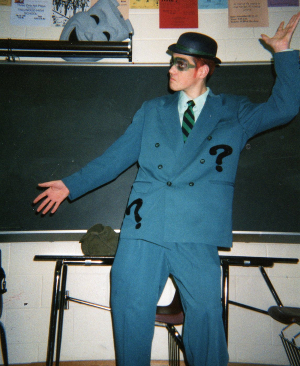 At school, I was that kid constantly saying, “Smmmooookin’!” or “P-A-R-T-why? Because I gottaaaa!” Sure, it’s embarrassing now, but the other 12-year-olds were into it. I could get laughs. It became my thing. My Jim Carrey impression was off the charts. When Dumb and Dumber came out a few months later, it only got worse. “We got no food, we got no jobs, our pets’ heads are falling off!” Being loud, obnoxious and idiotic was officially my modus operandi and Jim was my idol. My spiritual guide through the dawning of adulthood. I finally found my true self. And it was imitating this other guy.
At school, I was that kid constantly saying, “Smmmooookin’!” or “P-A-R-T-why? Because I gottaaaa!” Sure, it’s embarrassing now, but the other 12-year-olds were into it. I could get laughs. It became my thing. My Jim Carrey impression was off the charts. When Dumb and Dumber came out a few months later, it only got worse. “We got no food, we got no jobs, our pets’ heads are falling off!” Being loud, obnoxious and idiotic was officially my modus operandi and Jim was my idol. My spiritual guide through the dawning of adulthood. I finally found my true self. And it was imitating this other guy.
This lasted years. I had a scrapbook filled with his every magazine cover and article. I saw and loved Batman Forever, Ace Ventura: When Nature Calls, The Cable Guy, and on and on. Now, when I moved to the U.S. in 1995, I had the chance to completely reinvent myself. Nobody knew who I was or cared about my past life in Europe. It was a totally clean slate. But I stuck firm with my Carrey schtick, even as it became harder to impress friends with it. When I finally did find my niche, it was through the theater department, where goofing off like a maniac for a laugh was accepted and embraced on the stage.
Now it’s 1998. I’m 16 and still fully embracing this life of buffoonery, only now I have a major crush on a girl and it’s throwing my life off balance. She’s one year older, driven, serious about her schoolwork and her art (her dream was to be an animator, which she now is at Pixar), and not impressed at all by someone who talks out of his ass sometimes like that imbecile in the movies. Luckily, she’s in the same circle of friends and I can occasionally make her laugh with some genuine wit, but will then completely turn her off the next day by making a joke about her boobs. Yet still we hang out. We’re clearly just friends, and I can tell that she doesn’t feel the same way about me as I feel about her, but I sense that she could. Perhaps it is naïveté or hubris, but I honestly feel that possibility in the air. If I were to just do something about it. To quote an angel stripper from a film that had come out earlier that year and remains one of my all-time favorite masterpieces: “There is fate, but it only takes you so far because once you’re there it’s up to you to make it happen.”
January 31, 1999. Meet Joe Black has already come and gone from theaters, dismissed by critics and audiences alike and nowhere near my radar. I was seeing things such as A Night at the Roxbury and Urban Legend multiple times instead. The girl invites me and our friend Bethany to a double feature at the Norfolk Army base. They screened films there for $3 or something and we were mainly going for our umpteenth viewing of A Bug’s Life, but you could stay and see Meet Joe Black for free, so why not? Over the course of the three-plus hours that Martin Brest’s film unfolded before me that night, I can honestly say that my life was changed, and not just because this girl was obviously bored and tired so at some point rested her head on my shoulder, which was an innocent yet seismic event perhaps still unparalleled in my experience with girls.
For those uninitiated, Meet Joe Black revolves around Death deciding to take human form for a few weeks to see what all the fuss is about and striking up a deal with Bill Parrish (Anthony Hopkins) to be his guide in exchange for delaying Bill’s inevitable demise. It’s a savvy move by Death, since Parrish is rich as fuck and spends every second of his life in complete luxury. A further savvy move by Death is taking the body of Brad Pitt for his visit, so it’s no surprise when Parrish’s daughter, Susan (Claire Forlani), falls in love with him. With that as the spine, the film ambitiously holds a microscope up to everything from the taste of peanut butter to sibling rivalry to the very meanings of love and life. To the 16-year-old with a girl’s head on his shoulder, still formulating his own opinions about those things, it was making a lot of sense. I mean that in a profound way, and I don’t think it’s glib to say that the first moment of intimate, physical contact I experienced with this person I grew to love coinciding with images flickering into my brain from a film saying that true love is less about one’s own feelings and desires, and more about recognizing the feelings and desires of another and placing them above your own, had enormous impact on me.
But more superficially, Pitt plays Death in the film as a strict observer. A man of very few words. This is one of the common criticisms of the movie – that he’s essentially catatonic – but clearly it’s a choice and it’s consistent, so I suppose it boils down to taste. In any event, Susan repeatedly asks him probing questions about his life and his history and he just never answers. He just stands there or asks her a different question. This was a total revelation. If I wanted girls to like me, I should just shut my dumb mouth. And I did. No more Jim Carrey impressions. No more desperate attempts to be the center of attention at all times. A few weeks later, that girl and I were sitting in my parents’ van parked in front of her house and she was crying her eyes out over not being cast in the role she wanted in the school play. After an hour of venting, she hugged me firmly and said, “You’re such a good listener.” It was the turning point in our relationship, and we were officially dating shortly after that. As glib as this all may seem, there’s not a doubt in my mind that Meet Joe Black inadvertently launched me into maturity, because you don’t start truly learning until you start truly listening. This goes well beyond impressing teenage girls and is a philosophy I carry to my writing and directing today.
I’ve since seen Meet Joe Black probably 30 more times and will defend to my death its status as a legitimately great film, independent of my personal connection to it. Undeniably slow, the movie’s pace is almost unanimously derided but to me is simultaneously hypnotic and appropriate, given the film’s ultimate message of how precious each moment of time is. Pitt described the film as a symphony, with Martin Brest carefully conducting, bringing up the strings here and then the bass section there, and I’d have to agree. The way he allows himself the freedom to follow story tangents and expound on seemingly inconsequential connections between secondary characters is hugely influential in my own storytelling. In particular, the relationship between Jeffrey Tambor and Marcia Gay Harden is fully realized and textured, juxtaposing the innocent puppy love at the film’s center.
From a technical standpoint, Emmanuel Lubezki’s cinematography is the best he’s ever done. Long before becoming the go-to guy for camera showmanship, here he was simply exercising his considerable talents in lighting and composition. Interior lighting, to me, is still the cornerstone of the craft and the most difficult to pull off tastefully, and Meet Joe Black belongs up there with the all-time greats in that regard. The same is true of Dante Ferretti’s production design, turning the Aldrich Mansion into a setting that sometimes feels like a fairy-tale castle and, at other times, a tomb. Thomas Newman’s score is the definition of elegance and class. All down the line, excellence. The beating heart of it all, though, is Anthony Hopkins. A giant of the acting profession, he’s rarely been better, juggling the frustration, fear and ultimate dignity of a man who knows his time is running out.
At the end of the day, however, I don’t need to defend the film on artistic merits. It did the thing that every film has the chance to, but so few actually do. It burrowed deep into my brain and my heart and left me seeing the world from a different angle. In a way that is difficult to explain other than as this kind of shallow anecdote, I’m certain that if more 16-year-olds could accidentally stumble into theaters showing films like Meet Joe Black, the world would be a better place.



